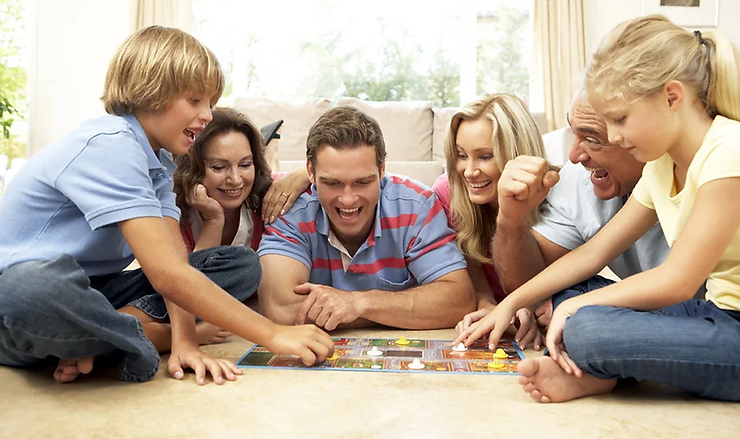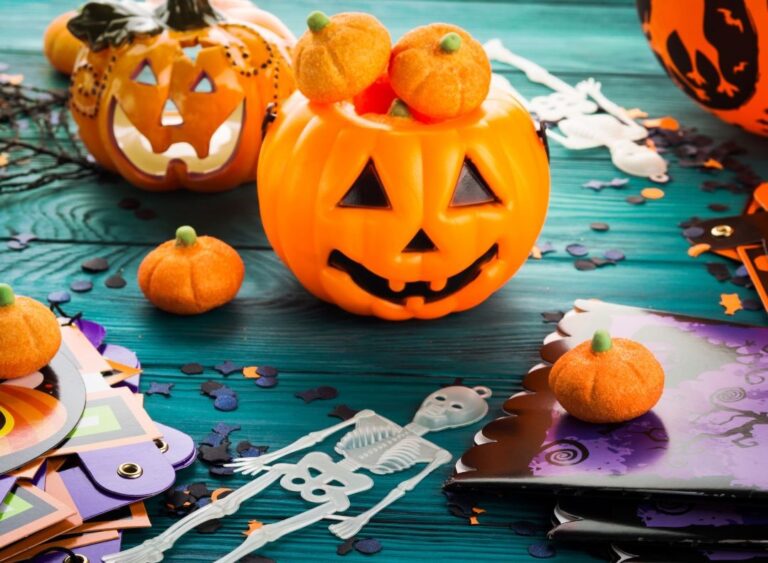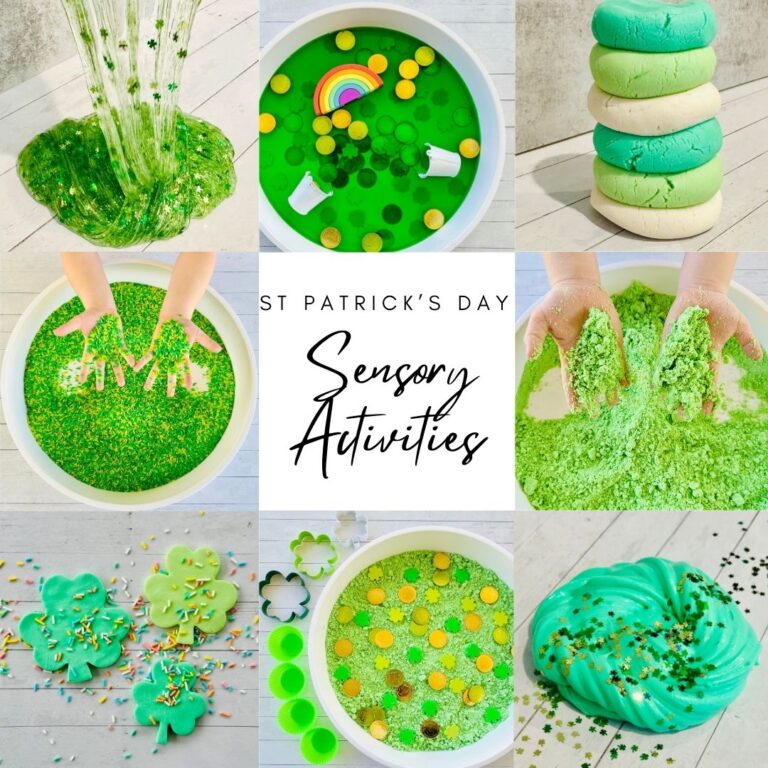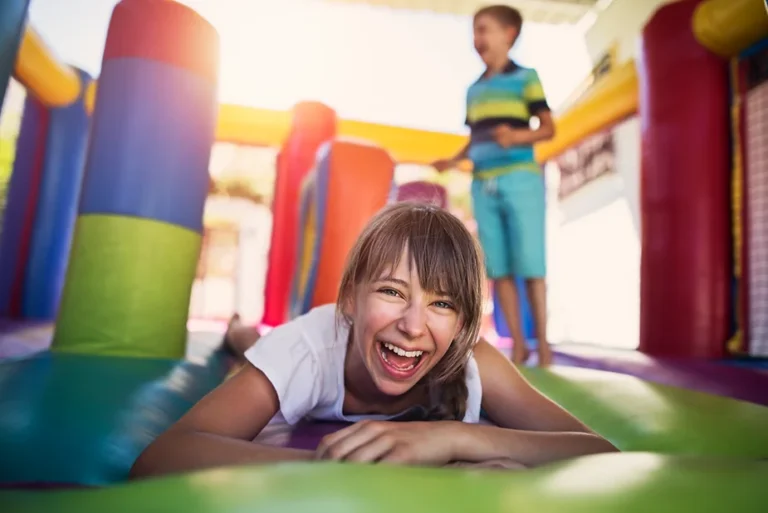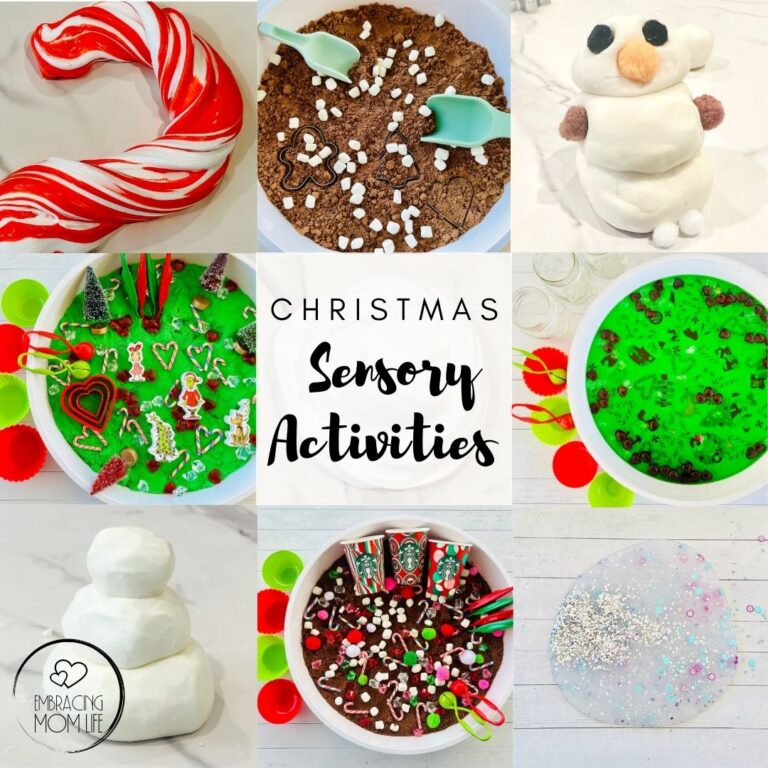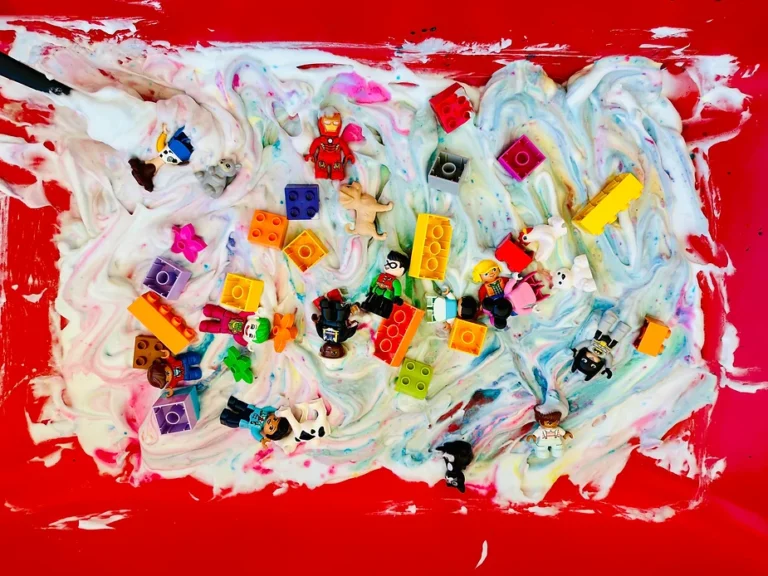Ultimate Toy Guide: 35 Best Toys for Preschool Children

This post may contain affiliate links and I could earn a small commission at no cost to you. However, I will never recommend anything that I do not believe in or use myself. You can read more about my disclosure policy here.
Today I’m excited to share the best toys for preschool aged children!
Play is an essential cornerstone of a child’s growth and development, and toys are the tools that unlock their imagination and learning.
Play is a fundamental aspect of childhood that goes beyond mere entertainment. It is a natural way for children to learn, explore, and develop essential skills that set the foundation for their future. One of the key catalysts for effective play is toys.
Toys are more than just objects; they are tools that facilitate imagination, creativity, and cognitive, emotional, and social growth in children. Toys play a significant role in a child’s development and how they contribute to shaping well-rounded individuals.
Two Types of Toys: One-and-Done vs. Open-Ended Play
When it comes to selecting toys for preschool children, it’s important to consider the distinction between one-and-done toys and open-ended toys. Understanding these categories can greatly impact a child’s play experience and overall development.
One-and-Done Toys
One-and-done toys are often flashy, trendy, and captivating at first glance. They tend to come with a specific purpose or function, leaving little room for imagination or extended engagement.
These toys might include electronic gadgets, action figures with predefined actions, or games with a fixed set of rules. While they can provide immediate entertainment, their appeal tends to wane quickly as children exhaust the limited possibilities they offer.
While one-and-done toys can certainly have their place, it’s important to recognize their limitations. They might teach specific skills or concepts, but their impact on a child’s overall development can be somewhat limited. These toys typically don’t encourage the depth of engagement, creativity, and versatility that open-ended toys do.
Open-Ended Toys
Open-ended toys, on the other hand, are like blank canvases waiting for a child’s imagination to bring them to life. These toys have no predefined outcomes or specific instructions, allowing children to explore and create in their own unique ways. Open-ended toys invite children to think outside the box, experiment, and invent their own stories, which contributes significantly to cognitive and emotional development.
One of the most significant advantages of open-ended toys is their ability to grow with a child. As children mature, their play patterns evolve, and these toys can adapt to their changing interests and abilities. Whether it’s constructing elaborate structures, designing imaginary worlds, or role-playing different scenarios, open-ended toys provide endless possibilities for learning and growth.
The Importance of Both Types
While open-ended toys are often praised for their developmental benefits, there is a place for both types of toys in a child’s playroom. One-and-done toys can offer quick entertainment and introduce specific concepts, while open-ended toys foster creativity, critical thinking, and emotional expression. Striking a balance between these two types of toys ensures a well-rounded play experience that addresses various aspects of a child’s growth.
The Benefits of Open-Ended Play
Fueling Creativity: Open-ended toys don’t come with a manual or a predefined set of rules. This freedom allows children to invent their own narratives, characters, and scenarios, fostering their creative thinking and storytelling skills.
Developing Problem-Solving Skills: When children engage with open-ended toys, they encounter challenges and obstacles that require them to think critically and find solutions on their own.
Enhancing Cognitive Development: Through open-ended play, children refine their cognitive abilities, such as spatial awareness, logical reasoning, and understanding of cause and effect.
Promoting Social Skills: Open-ended toys encourage collaborative play, enabling children to negotiate, communicate, and cooperate with their peers as they build, create, and explore together.
Cultivating Emotional Intelligence: As children infuse their emotions and ideas into their play, they develop a better understanding of their feelings and those of others.
Sustainable and Eco-Friendly: Many open-ended toys are made from natural materials and have a timeless design, making them environmentally friendly and durable for generations.
Choosing Toys That Suit Your Child’s Needs and Interests
Selecting toys for preschool aged children that aligns with their needs and interests is a crucial step in promoting meaningful play and fostering their development. Every child is unique, possessing distinct preferences and areas of curiosity.
By observing your child’s behaviors, listening to their conversations, and understanding their current developmental stage, you can gain insights into their likes, dislikes, and areas where they could benefit from enrichment.
Whether it’s a budding artist who would thrive with art supplies, a future engineer who would relish building sets, or a young storyteller who would flourish with imaginative play toys, tailoring your toy choices to your child’s individuality ensures that their playtime is not only enjoyable but also serves as a platform for growth, learning, and self-expression.
Related: Ultimate Toy Guide: 20 Best Board Games for Preschoolers
35 Best Toys for Preschool Aged Children (Ages 3 to 5)
1. Magnetic Tile
My personal favorite toys for preschool children are Magnetic Tiles. Children experiment with the magnetic tiles, attaching them to create imaginative structures. They might build towering skyscrapers, colorful mosaics, or even a magnetic zoo with animals hanging on the walls.
2. Doll House
Little ones move dolls around, arrange furniture, and bring the dollhouse to life. They might have dolls chatting in the living room, preparing meals in the kitchen, or embarking on imaginative adventures throughout the tiny house they oversee.
3. Parking Garage
Kids zoom toy cars up and down ramps, creating exciting races and imaginary city scenes. They might mimic real-life parking scenarios or invent adventurous stories where their toy vehicles embark on thrilling journeys.
4. Play Kitchen
Another favorite toys for preschool children are play kitchens. Children step into the role of little chefs, pretending to cook and serve meals. They use pots, pans, and utensils, whipping up imaginary feasts and honing their creative storytelling skills.
5. Ice Cream Shop
With colorful scoops, cones, and toppings, my child creates ice cream sundaes with the Melissa and Doug Ice Cream Counter, fueling imaginative play and social interaction. They take orders, make delicious concoctions, and serve up smiles to family and friends.
6. Fort Builder
Kids become architects, constructing secret hideouts using with strong, snap-together builders. It’s a haven for imaginative play as they create their own worlds within these cozy structures.
7. City Building Blocks
Little architects stack and arrange the city building blocks, constructing their own miniature metropolis. They add cars, trees, and characters, creating stories and adventures in the bustling city they’ve built.
8. Stacking Stones
Children carefully balance and stack the stones, forming various shapes and heights. It’s like a tactile puzzle, where they focus on each placement, exploring different arrangements to create sturdy and visually pleasing formations.
9. LEGO Set
These LEGO sets allow kids to build vehicles, animals, and more. They inspire creativity, improve fine motor skills, and provide endless opportunities for imaginative play.
10. Stepping Stones
The possibilities are endless for preschool children with stepping stone toys. With these stepping stones, a child leaps, hops, and balances on them, creating their own imaginative obstacle course. They might pretend they’re hopping over lava or crossing a river, all while improving their coordination and having a blast.
11. Wobble Board
Children step onto the wobble board, trying to stay upright as they rock and balance. It’s like a playful dance, challenging their stability and making them giggle with delight.
12. Art Supplies
Little artists dive into a world of creativity, using crayons, markers, and paper to bring their visions to life. They draw, color, and craft, expressing themselves through vibrant artwork.
13. Dress-Up Clothes
Children transform into characters from their wildest dreams – superheroes, princesses, and explorers. Dress-up play lets them explore different roles, nurturing their imagination and social skills as they interact in various scenarios.
14. Play Silks
These colorful fabrics become capes, rivers, and magical landscapes in the hands of imaginative children. Kids use them to create costumes, build forts, and add a touch of enchantment to their playtime.
15. Air Fort
With an air fort, a child transforms an ordinary space into an imaginative hideaway. They simply inflate it, crawl inside, and embark on adventures within their secret fort, fostering creative play, storytelling, and a sense of cozy exploration.
16. Toy Keys and Cars
Little ones use these toy keys to unlock doors and start the wooden cars, mimicking real-life activities. It’s a playful way for children to engage in pretend driving and explore the concept of cause and effect, all while fostering imaginative play.
17. Vet Kit
Young animal lovers step into the shoes of a veterinarian, treating stuffed animals and dolls with care. They diagnose ailments, provide comfort, and explore the world of empathy and nurturing.
18. Large Trucks
Children engage in dynamic play, maneuvering large trucks through imaginary towns, rescue missions, and transportation adventures. These trucks become vehicles for creative storytelling and exploration.
19. Tonka Trucks
Another favorite toys for preschool children are Tonka Trucks. Children use Tonka trucks for all sorts of construction adventures. They load them up with dirt, rocks, and imagination, creating construction sites, moving heavy loads, and exploring the world of vehicles. Check out this backyard play area for kids created with Tonka Trucks. These rugged toy trucks encourage imaginative play, fine motor skills, and a fascination with all things big and powerful.
20. Race Tracks
The race track becomes a thrilling arena for my child’s speedy vehicles. They send cars zooming down the track, experimenting with speed and distance while having exhilarating racing adventures.
21. Marble Run
Kids design intricate tracks and ramps for marbles to roll down, testing different configurations and challenging themselves to create the ultimate marble racecourse. They experiment with angles and gravity to engineer exciting marble journeys.
22. Take Apart Vehicles
Kids become mini mechanics as they disassemble and reassemble these vehicles. This hands-on play not only satisfies their curiosity about how things work but also enhances fine motor skills and problem-solving abilities.
23. Pirate Ship
Kids take command of a pirate ship, sailing the high seas and embarking on daring adventures. They hoist the sails, search for hidden treasures, and engage in imaginative role-playing as swashbuckling pirates. This toy sparks creativity, storytelling, and social play as children imagine life on the open ocean, complete with epic battles and thrilling quests.
24. Board Games
Preschoolers are at a developmental stage where they are ready to start exploring the world of board games. Around this age, children begin to grasp basic concepts such as taking turns, following simple rules, and engaging in imaginative play. This makes it an ideal time to introduce them to board games that are designed to be age-appropriate and easy to understand. Check out our list of 20 best board games for preschoolers.
25. LCD Doodle Board
Children use an LCD doodle board as a canvas for their creativity. They draw, write, and sketch with the attached stylus or their fingers, and with the press of a button, their creations vanish, ready for a new masterpiece. It’s a modern twist on drawing that encourages fine motor skills and allows kids to express themselves and providing endless opportunities for artistic exploration and fun.
26. Play Dough
Young sculptors shape, mold, and create with colorful playdough, allowing their imaginations to run wild. It’s a sensory delight that promotes creativity and fine-tunes their motor skills.
27. Kinetic Sand
Another one of my favorite toys for preschool children are kinetic sand. Mesmerizing sand invites children to sculpt, mold, and shape without making a mess. It’s a sensory experience that encourages tactile exploration and imaginative construction.
28. Slime
Slimy, stretchy, and squishy, slime offers endless entertainment as kids manipulate and play with its unique texture. It’s a sensory adventure that sparks imaginative and tactile play.
29. Number and Alphabet Puzzles
Little learners engage in playful education as they match numbers and letters to their corresponding pieces. These puzzles support early literacy and numeracy skills in an engaging way.
30. Jigsaw Puzzle
Children engage in playful classification, sorting objects by color, shape, size, or other attributes. This activity sharpens cognitive skills and lays the groundwork for early math and logical thinking.
31. Colorful Dominoes
Kids arrange these vibrant dominoes in intricate patterns, setting off chain reactions of tumbling tiles. It’s a game of strategy and engineering, where they explore physics concepts while having a blast.
32. Sorting Toys
Young learners use sorting toys to categorize objects by various attributes like color, shape, size, or type. They arrange and rearrange the items, developing cognitive skills and pattern recognition. These toys offer engaging activities that stimulate logical thinking and lay the foundation for more complex problem-solving later in life.
33. Floor Puzzles
These oversized puzzles spread out on the floor, captivating children with vibrant scenes and large pieces to manipulate. They encourage collaborative play and help develop critical thinking.
34. Character Puzzle
As kids piece together this captivating puzzle, they create a lively Disney character procession, fostering attention to detail and enhancing cognitive skills.
35. Ribbon Streamer
Twirling, spinning, and dancing with ribbon streamers is pure joy. Kids express themselves through movement, enhancing gross motor skills and creativity as they create mesmerizing swirling patterns in the air.
Final Thoughts
Our list of best toys for preschool aged children (ages 3 to 5) offer a refreshing avenue for children to discover the wonders of unstructured, imaginative play. These open-ended toys not only captivate young minds but also contribute to their holistic development, fostering creativity, critical thinking, and social skills.
By embracing the magic of open-ended play, we can empower the next generation to become innovative thinkers, empathetic collaborators, and lifelong learners. So, the next time you’re shopping for toys, consider the boundless potential that open-ended toys can unlock in your child’s playtime.
Recommended
- Ultimate Toy Guide: 20 Best Board Games for Preschoolers
- Ultimate Toy Guide: 30 Best Toys for Toddlers
- 10 of the Best Bluey Games to Play at Home!
- 10 Exciting Outdoor Summer Activities for Young Kids at Home

